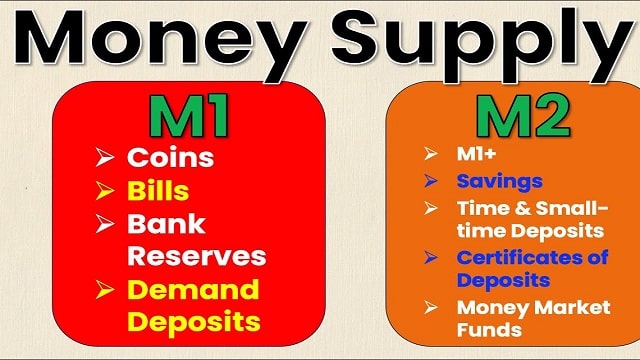M2 is a monetary aggregate that includes M1 (coins and banknotes in the hands of the public and bank reserves ) and to this is added short-term deposits (up to two years), savings accounts, current accounts, and daily repurchase agreements that people have in the financial system.
Generally, these deposits have a maturity of no more than one year.
This aggregate is accounted for differently by country and has its extension to the monetary aggregates M3 and M4. Although it is true that it is the one most used by the US Federal Reserve, this definition of money does not include investments made in variable income and fixed income.
The fundamental difference between the various monetary aggregates is the liquidity of the assets that compose them. Liquidity is understood not only as physical money, but also as securities and bank accounts, promissory notes, and checks.
Utility of M2
The M2 is used to control the money supply, that is, the amount of money in circulation in an economy or economic zone, and is very important for a central bank since it allows spending and investment and indicates the level of economic activity. In turn, economic activity has an impact on growth and inflation.
The central bank will be able to influence, through its economic and monetary policy, the control of the amount of money in circulation to sustain inflation and will achieve sustained growth over time thanks to the fact that it promotes increased employment, equilibrium in the balance of payments and stable money ( the Fed’s objective ).
- In expansionary periods, M2 rises because banks are more willing to lend money, and the amount of money in circulation increases.
- In periods of recession, this monetary aggregate decreases as banks have trouble lending money.
Furthermore, following the crises suffered, banks have to allocate a minimum ratio to reserves in order to cover risks that may arise due to the global situation and that may generate a contagion effect between countries and between the productive sectors of the different economies or economic zones.
